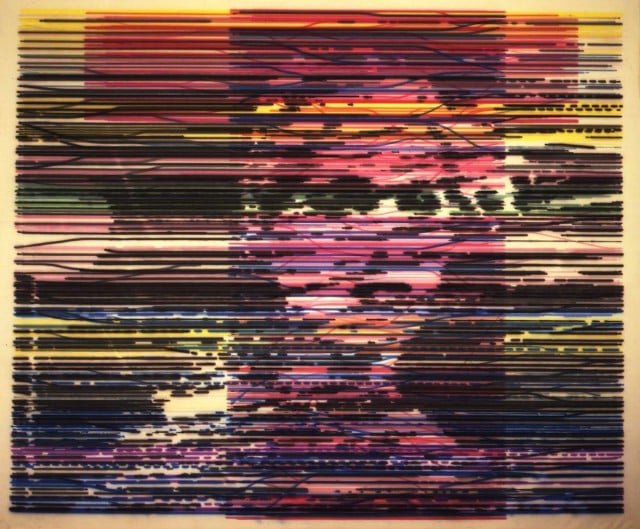
This painting was made in 1987, using a (very) primitive ancestor of an ink jet printer invented and built by an artist named Anton Perich, who is having a solo show at Postmasters gallery in New York. One thing that fascinates me about the piece, titled “Visitation,” is its status as historical hinge: It takes inspiration from the scan lines of old-fashioned analog TV (Perich was an early adopter of tape-based video) at the same time that it anticipates the one-line-after another technology used today to produce digital scans and prints, and on the verge of dissemination when “Visitation” was made.
I’m also intrigued by how the piece mechanizes the pseudo-mechanical smears of Gerhard Richter. In the early ’60s, Richter discovered that you could simulate a photographic look simply by dragging a squeegee across the surface of a standard realist picture, and that this crossover could yield big symbolic and semantic returns; Perich did away with the simulation, so that a horizontal spread of paint actually approached the photographic directly.
That means that, absurd as it seems, there’s something in common between Johannes Vermeer’s high-res, handmade approximation of an optical look, in the 1650s, based on the technology of the new camera obscura, and Perich’s low-res encounter with mechanized vision, more than three centuries later, based on TV. The result, in both cases, is figures that have a ghostly presence despite their roots in machines. Or maybe because of them.
For a full survey of past Daily Pics visit blakegopnik.com/archive.